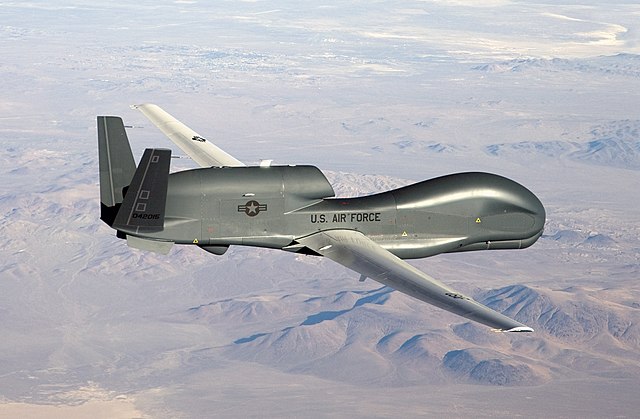
Uh-oh. I’ve just had a very nasty realisation. We’ve already disobeyed Asimov’s Three Laws of Robotics and if Hollywood has taught us anything, doing that is a fast-track to global human annihilation.
Isaac Asimov’s Three Laws of Robotics are:
- A robot may not injure a human being or, through inaction, allow a human being to come to harm.
- A robot must obey the orders given to it by human beings, except where such orders would conflict with the First Law.
- A robot must protect its own existence as long as such protection does not conflict with the First or Second Laws
So it seems that giving a robot guns, missiles and a directive to use them against people is in direct violation of these Laws. But are we daft enough to give a machine this much power?
Well, yes. In fact, there is a whole industry blossoming around giving enormous amounts of destructive capability to boxes of printed circuit boards and wires. War robots are becoming the de facto standard on the modern battlefield, and as a result we have doomed ourselves to being massacred at the hands of these gun-toting iPods.
Hahaha, at least they can’t fly!! 🙂 🙂 🙂
Um… yes. About that. Meet the Predator, the Reaper and the Global Hawk (all good, totally-not-ominous names):



Oh no. Well, at least they’re not stealthy! We can keep an eye on them on radar :)!
You’re going to hate me soon. I’m afriad that’s not true either. Meet the Boeing Phantom Ray:
And also the X-47 Pegasus
Erm…
Yeah, exactly.
But at least they’re just over warzones…
That’s true. And Iran… Except for the Federal Aviation Administration’s (FAA) plans to mix manned and unmanned air vehicles in our normal airspace, like over cities and using our normal airports etc. What happens next could be very interesting. As we start seeing Unmanned Air Vehicles (UAVs), Remotely Operated Air Vehicles (ROVs) and other Unmanned Air Systems (UASs) – to use their proper name – sharing our airspace, the next time you are circling over London waiting for a slot at Heathrow to land, you might have a FedEx UAS carrying cargo behind you and a Police Surveillance UAS in front.
The future sky could be filled with an abundance of civilian, military and also commercial UASs. The FedEx example is provocative because a lot of FedEx’s cost goes on pilots. A lot of the structure in FedEx Express’s aircraft is devoted to things that keep those pilots alive and comfortable: seats, controls, air conditioning, heaters, windows, etc. Remove these and you improve the overall efficiency of what is a substantial freight operation. One where even 1% improvement could mean tens of millions of dollars of extra profit.
Watch this [air]space!
